The $3K Titan V is the fastest graphics card, even though it's not for gaming
A preview of what we can expect from the coming generation of Nvidia GPUs.
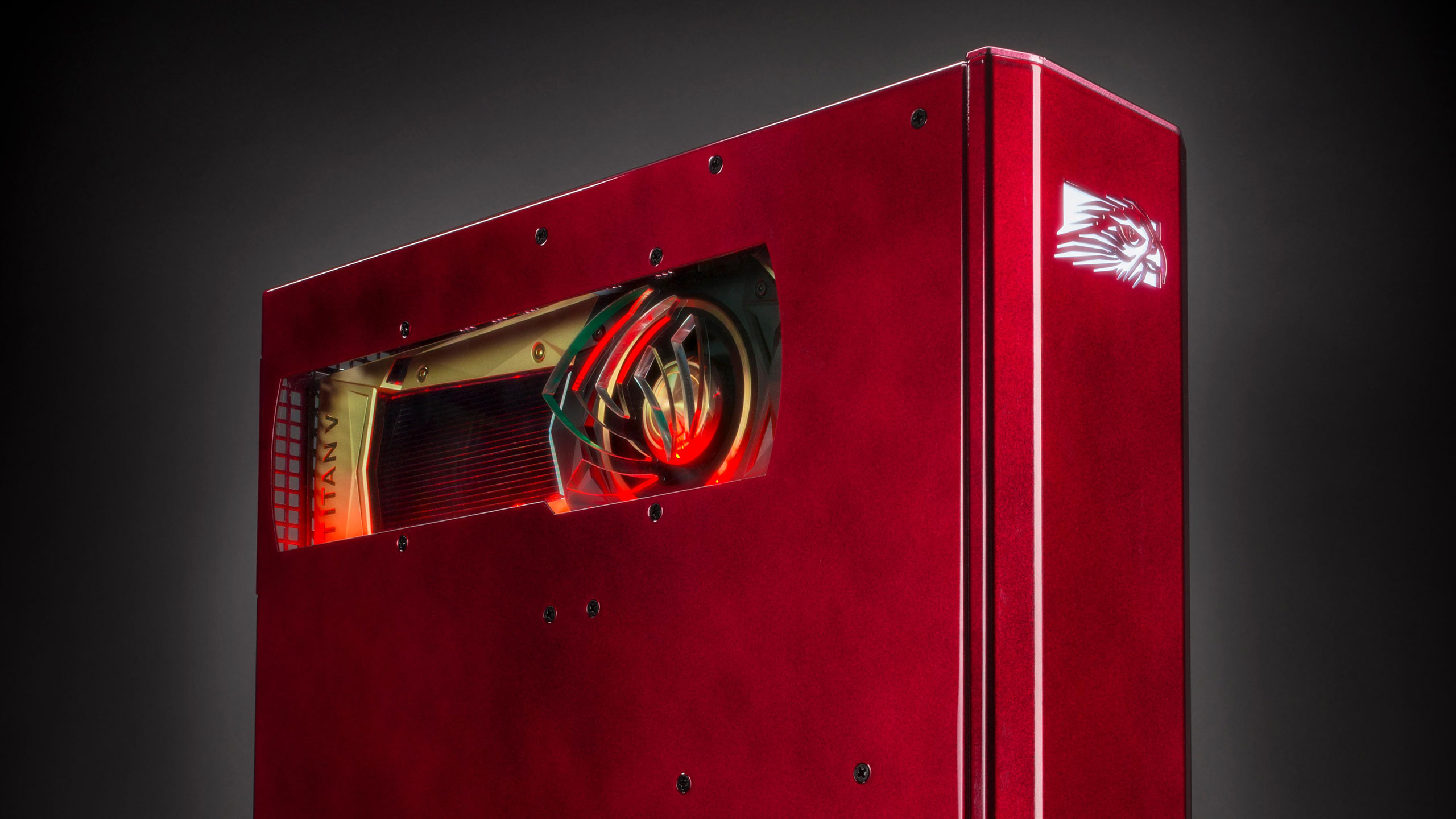
Nvidia's surprise announcement and launch of the Titan V upped the ante for the fastest graphics card in the world. Former Titan cards cost $1,000, and the Titan X and Xp moved the target a bit further north to $1,199. With the Titan V, Nvidia goes for a completely different class of users, checking in at a breezy $2,999. Who could possibly need such a graphics card? Well, not gamers—or at least, not people who are only interested in playing games.
We didn't make Nvidia's shortlist for an initial Titan V sample—"it's not for gaming" was the curt response—but Falcon Northwest came through with a drool-worthy PC that kicks practicality to the curb and goes all-in on style and performance. The latest version of the company's Tiki naturally includes the Titan V, but the luxurious hardware doesn't stop there. The potent totem includes Intel's fastest CPU for gaming, the Core i7-8700K, paired with 32GB of DDR4-3200 CL14 RAM, and then forget about storage bottlenecks with not one but two Samsung 960 Pro 2TB drives, configured in RAID 0. And just for kicks, there's a slot-load DVDR for good measure.
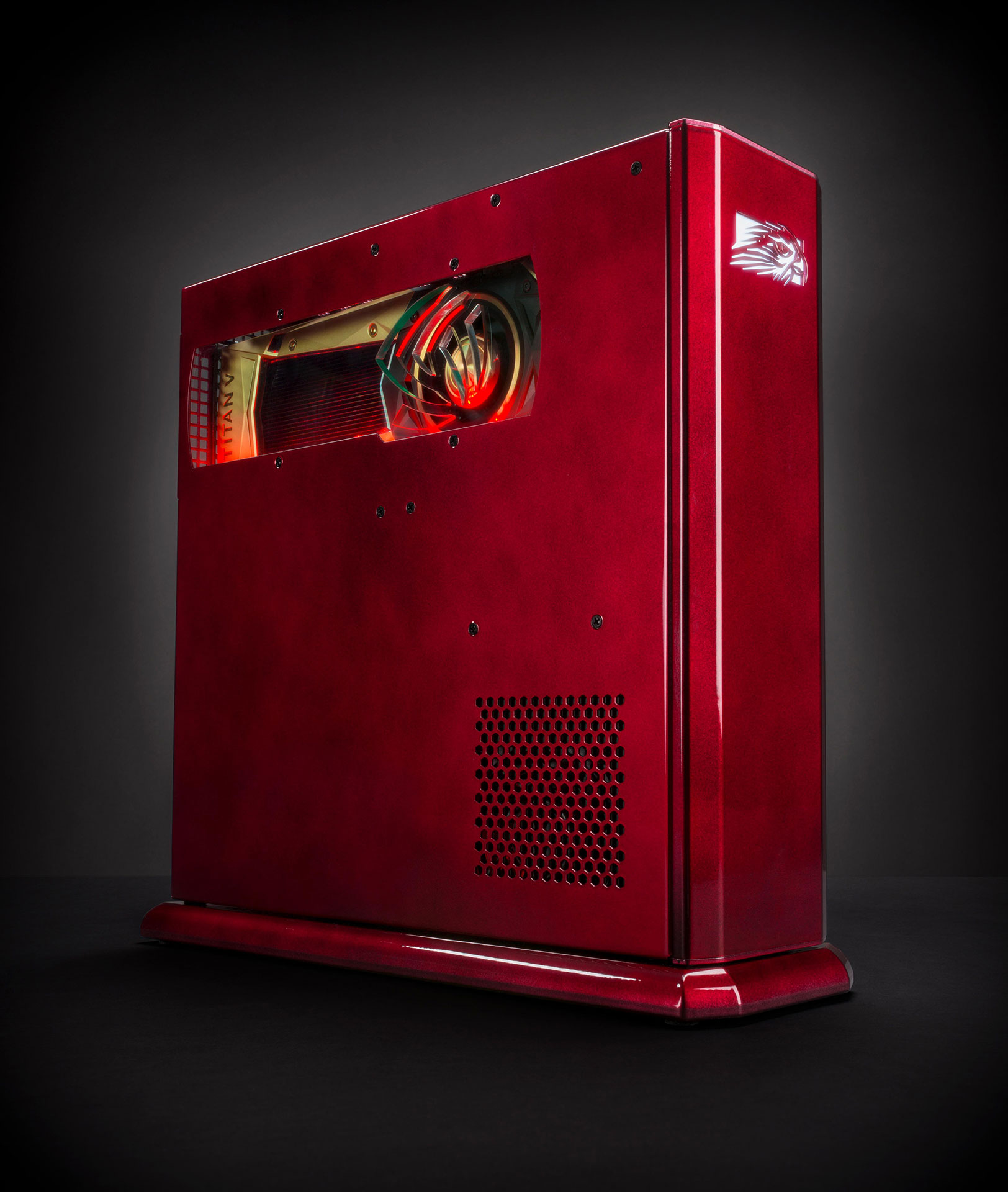
Next, take all this power and cram it all into a mini-ITX case built around Asus's ROG Strix Z370-I Gaming motherboard, with a custom chassis that you simply can't buy anywhere else. Falcon Northwest prides itself on stunning paintjobs, and while our sample is a relatively tame metallic burgundy, it's possible to go all-in on artwork if that's your thing. The result can be a one-of-a-kind masterpiece, worthy of the hardware residing within. For power, Falcon Northwest uses a Silverstone SX-650G SFX PSU, rated 80 Plus Gold, which means there's plenty of headroom for the included components, even with overclocking.
Wait—overclocking? Yeah. Getting all this power into such a small enclosure is itself an accomplishment, but Falcon Northwest will overclock CPU and GPU (if you want) to really push it over the top. How could you possibly keep an i7-8700K cool enough to hit 5.0GHz with a chassis that's only four inches wide? By finagling in an Asetek 550LC liquid-cooling solution and ensuring the radiator gets sufficient airflow.
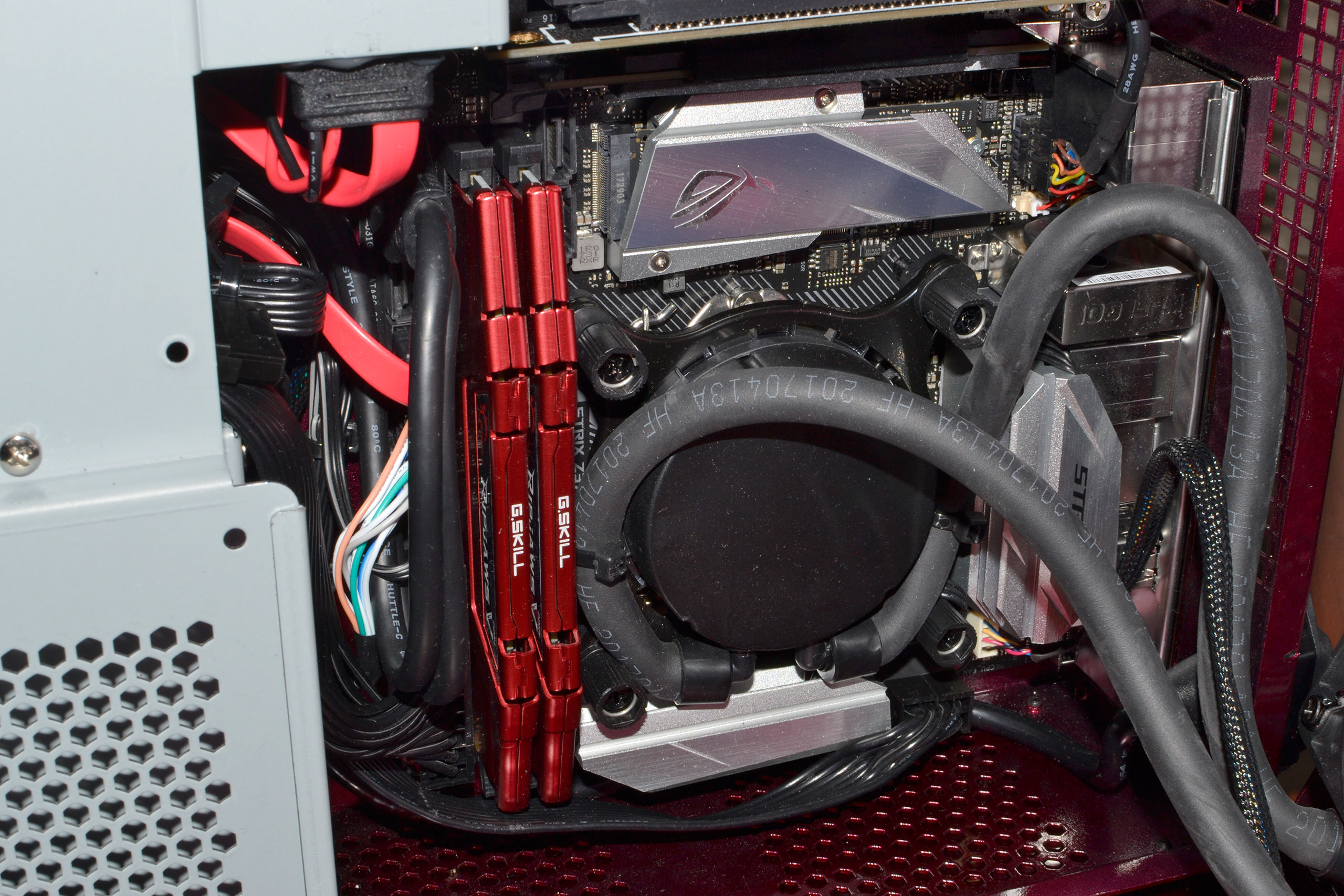
I was initially surprised at the CPU overclock, as I couldn't get my i7-8700K sample from Intel to run stably at 5.0GHz, and even 4.9GHz results in throttling so I had to settle for 4.8GHz. I asked Falcon Northwest's founder, Kelt Reeves, if they were delidding the CPU to help, and he said no. But as I ran additional tests I discovered that yes, it does throttle under certain workloads—y-cruncher and x264 encoding both pushed the CPU to 98C and clockspeeds dropped to 4.9GHz to compensate, though games still skip merrily along at 5.0GHz. In other words, the Asetek cooling does a good job and manages to fit into a very cramped space, but it doesn't overcome the limitations of Intel's TIM (Thermal Interface Material).
Overclocking of the Titan V is also possible, but for these initial tests I ran everything stock. Bumping the GPU core up +150MHz appears to be fully stable, and +125MHz on the HBM2 memory (yielding bandwidth of 748.8GB/s), but I haven't fully tested those settings. The core overclock does appear to be a bigger factor in performance than the HBM2 overclock, so keep that in mind. Overclocked, the Titan V is around 10 percent faster than at stock, but I pushed the fan speed curve up quite a bit to compensate for temperatures, so it's not nearly as quiet. I'm also using a stock GeForce GTX 1080 Ti FE for comparison, and you can get a similar 10-15 percent boost from that via overclocking.
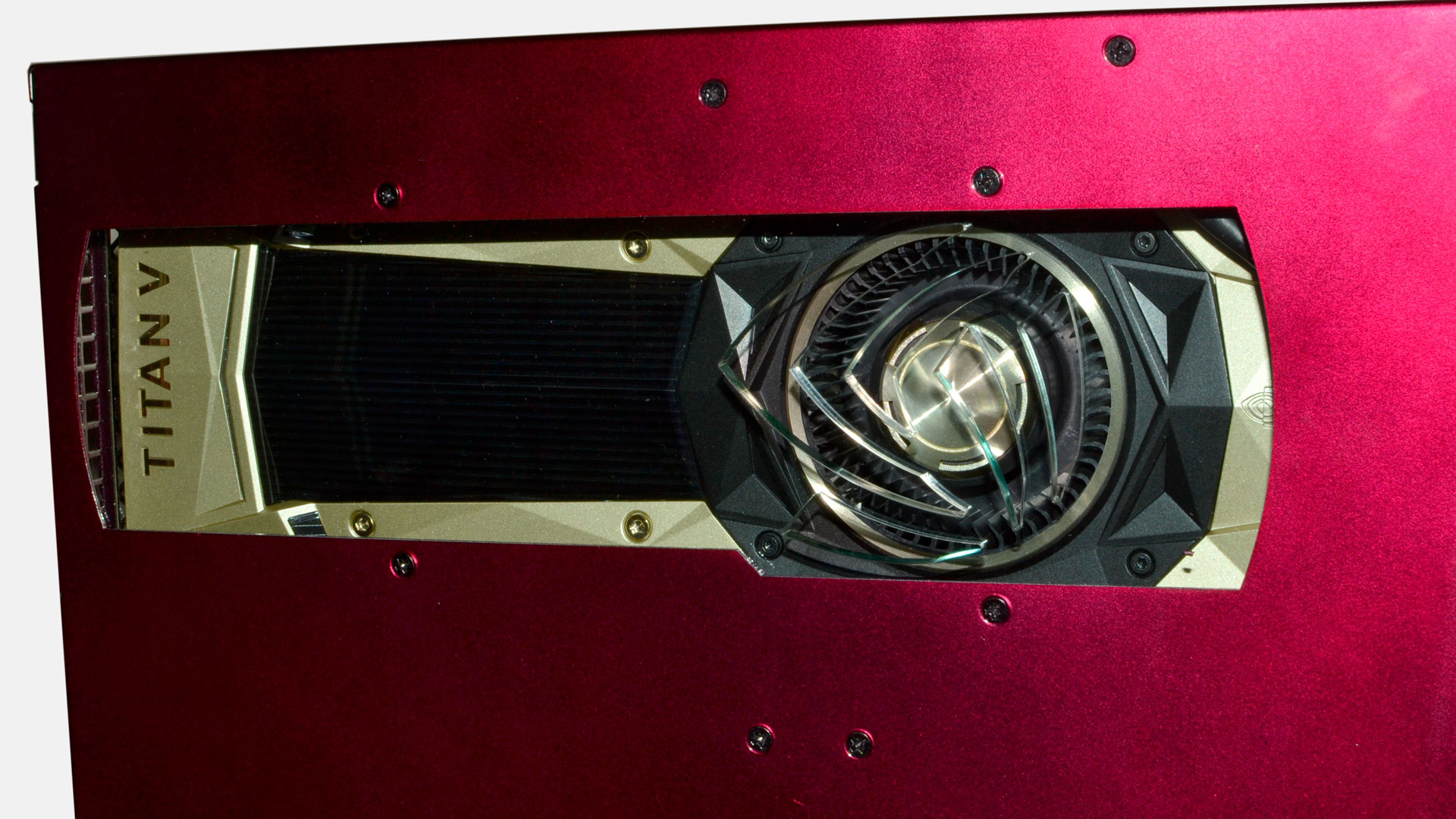
Nvidia says the Titan V isn't for gaming, but that didn't stop me. I ran 22 gaming benchmarks on the Tiki, at my usual 1080p, 1440p, and 4K ultra settings. There are a few stumbles here and there, likely thanks to the early nature of the drivers, but overall Volta shows a lot of potential. Volta is a brand-new architecture that's quite different from Pascal and Maxwell, with 64 CUDA cores per SM (instead of the usual 128), HBM2 memory, and other changes that Nvidia hasn't fully disclosed at this time. Combine that with the focus on machine learning rather than pure gaming—at least for the Titan V—and it's easy to see why a few titles may not run optimally right now.
The biggest gaming news, reviews and hardware deals
Keep up to date with the most important stories and the best deals, as picked by the PC Gamer team.
Let me also get this one out of the way, since it's ostensibly why Nvidia released the Titan V. It's really fast at certain computations, specifically FP16 operations using the Tensor cores. The card is rated to do up to 110 TFLOPS (that's trillions of floating-point operations per second), which used to be the realm of the fastest supercomputers. Seeing this much computational power packed into a single GPU is insane. Nvidia gives sample performance of up to 609 images per second for Resnet-50 training using the Tensor cores, compared to 240 images/s with a Titan Xp (which obviously lacks the Tensor cores), making the Titan V 154 percent faster. If you run apples-to-apples tests without the Tensor cores, the Titan V still does 308 images/s—so 28 percent faster than the Titan Xp, which is close to the theoretical difference in TFLOPS.
Note that unlike previous GeForce and Titan cards, the Titan V is using the full capabilities of the Volta GV100 architecture. This results in some interesting options, including double-speed FP16 CUDA calculations. The GPU can also run FP32 CUDA calculations at up to 14.9 TFLOPS, or FP64 at half that level, 7.45 TFLOPS. The use of the Tensor cores or CUDA cores in each SM is exclusive, however, so if you want access to the 110 TFLOPS of FP16 performance from the Tensor cores, that's not in addition to the CUDA performance. The Tensor cores are also rather specialized, and while it's possible to use them for certain gaming calculations, don't count on that happening—Tensor code will need to be specifically written for the processors.
But we're here for the games, right? If you've got three grand burning a hole in your wallet and you simply must have the fastest single GPU gaming solution, Titan V is generally the winner, easily surpassing the GTX 1080 Ti in most games. And at only a bit more than four times the cost. This isn't a value proposition at all, but it does give us a tantalizing taste of what we might see in a future GeForce branded card.























Not for gaming? Hardly. The Titan V is the fastest gaming graphics card around, beating the GTX 1080 Ti by an average of 13 percent at 4K. Not practical for gaming on the other hand… Yeah. That sounds about right. The Titan Xp was already highly questionable, delivering a few percent better performance than a GTX 1080 Ti with about a 70 percent price premium. Titan V takes diminishing returns to a new level, with 13 percent better 4K performance on average, and a best-case result of 27 percent better performance in a couple of games, but this time with a price premium of 325 percent.
As I mentioned earlier, there are also a few stumbles in our gaming tests, particularly in terms of minimum fps. While average framerates are higher, minimum fps ends up being a bit of a wash, but that doesn't tell the full story. There are plenty of games where performance is substantially better, but then there are some clear problems in a few cases. Both Vulkan games, Doom and The New Colossus, show poor minimums on the Titan V. Hitman also has some obvious problems, with performance capped far below what other GPUs can achieve (eg, at 1080p and 1440p ultra, the Titan V is limited to around 93 fps).
The Tiki itself is also a delight—not one I'd necessarily be able to afford, but it's incredibly impressive regardless. The i7-8700K may not quite match the beefier Intel CPUs when it comes to certain workloads, since it only has 6-cores/12-threads compared to the 10-core and higher options, but the clockspeed makes up for that in other areas. If you want a Tiki with up to a Core i9-7980XE, those are available—though not with 5.0GHz overclocks or dual M.2 drives in RAID 0.
Falcon Northwest is effectively selling fully custom hotrods to its clients. While these include famous celebrities and sports stars, however, there are also businesses that simply want extreme performance and quality and are willing to pay for it. The Tiki includes a full service 3-year warranty, and you can configure builds that most OEMs only dream about selling. Also included with each Falcon Northwest PC is a full list of benchmark results from the build and burn-in process, so you can refer back to these in the future and determine if your PC is slowing down.

More interesting to me than what the Titan V offers gamers is what it means to the world of AI research. I've attended Nvidia's GTC a few times, and while there are bigger companies using high-end server solutions, the number of research projects done using older and less expensive GeForce processors dwarfs everything else. I don't think Titan V is going to radically alter things, but for the right workloads, you're looking at 110 TFLOPS from a $3,000 product compared to maybe 15 TFLOPS from a $700 product. For better funded research projects, investing in the higher performance hardware could definitely pay off.
More importantly, Titan V brings the full feature set (outside of NVLink) from the Tesla V100 into the hands of standard PCs. Considering that Tesla V100 is only available right now through Nvidia's DGX-1 servers, in packs of eight and priced at around $15,000 each ($149,000 per server), buying Titan V cards and slotting those into more modest workstations allows for a lot of prototyping and initial development efforts without having to invest a ton of money into an expensive server—never mind the wait for the actual DGX-1 hardware.
Put another way, a big part of the success of GPUs in compute workloads has come from their ubiquity. Everyone has easy access to a GPU, and that has brought dramatically increased computational power at increasingly lower costs. Gaming has benefited the supercomputing realm immensely over the years. Now we're seeing a bit of a reversal, where products are becoming more powerful in order to benefit supercomputing and AI workloads, but this will also impact gaming capabilities. So next time someone scoffs at video games as meaningless, point out that most modern supercomputers wouldn't be nearly as powerful if it weren't for the influence of video game hardware.
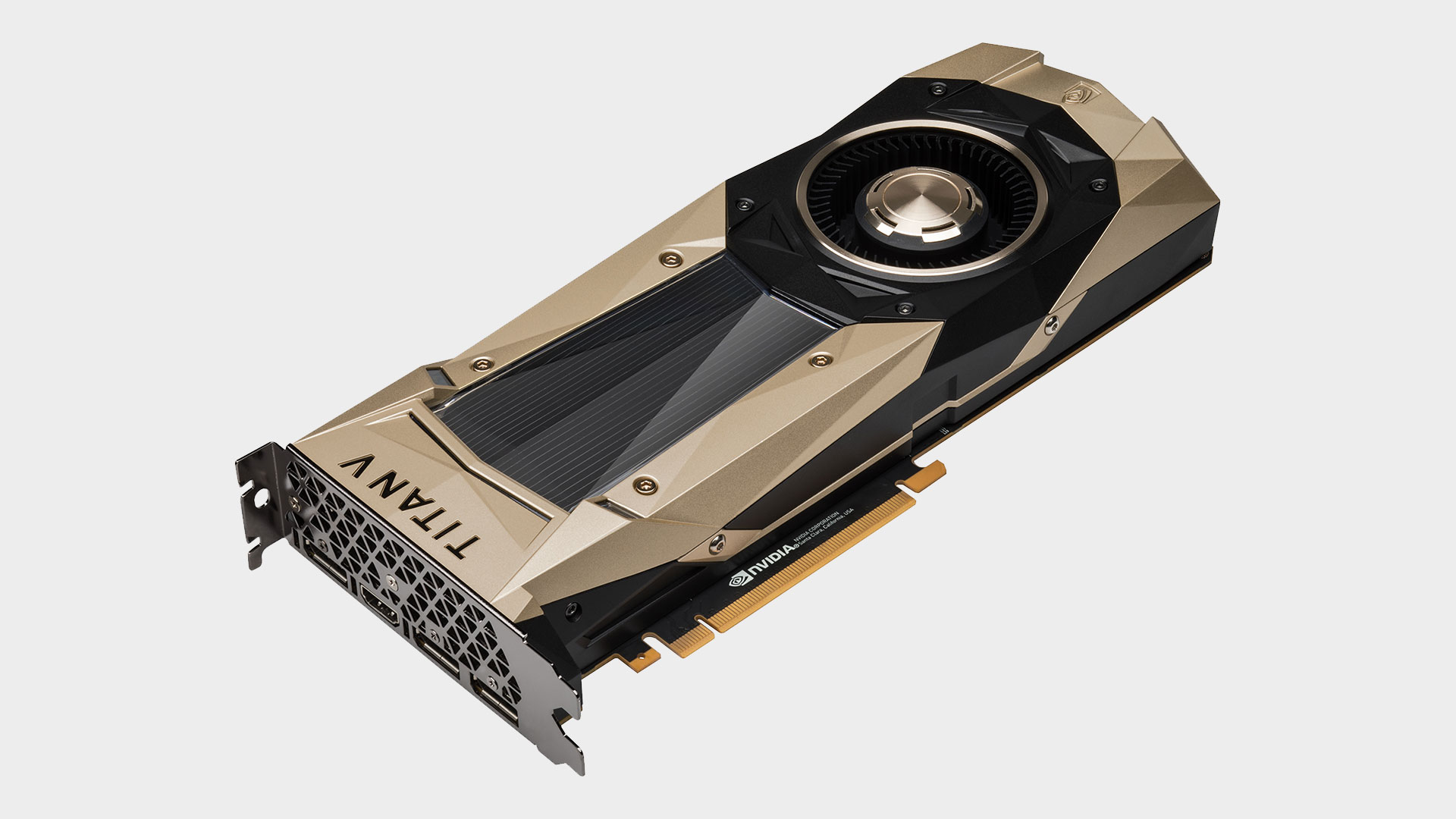
Of course, the Titan V isn't the only Volta card we're going to see. It may be the halo product for AI research, but for gaming Nvidia has plenty of ways to trim down the GPU size, reduce the price, and even increase performance. The FP16, FP64, and Tensor cores don't benefit gaming in any meaningful way right now. Ditching these (or at least reducing the number of each core type) could easily reduce the die size. The HBM2 memory also remains an expensive proposition, and with GDDR6 slated to arrive this year, I suspect we'll see that or even GDDR5/GDDR5X in GeForce cards using other Volta designs (eg, GV104, GV106, GV107).
Since TSMC has refined its existing process technology and reduced the size a bit (from 16nm to 12nm, nominally, though those numbers aren't fully indicative of the feature size), it's reasonable to assume we'll eventually see Volta chips that are similar in size to their Pascal counterparts, while delivering higher performance and/or lower power requirements. Whether it's the GTX 1180 or some other name, we can count on there being a replacement to the GTX 1080 at some point. And when it does arrive, it will probably perform like the Titan V at a fraction of the price—and with drivers that are targeted directly at gamers.
Jarred's love of computers dates back to the dark ages when his dad brought home a DOS 2.3 PC and he left his C-64 behind. He eventually built his first custom PC in 1990 with a 286 12MHz, only to discover it was already woefully outdated when Wing Commander was released a few months later. He holds a BS in Computer Science from Brigham Young University and has been working as a tech journalist since 2004, writing for AnandTech, Maximum PC, and PC Gamer. From the first S3 Virge '3D decelerators' to today's GPUs, Jarred keeps up with all the latest graphics trends and is the one to ask about game performance.